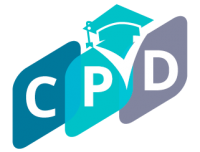Introduction:
In the rapidly evolving landscape of education, the cultivation of critical thinking skills has emerged as a cornerstone for preparing students to thrive in a complex, information-rich world. Teaching critical thinking goes beyond rote memorization, encouraging students to analyze, evaluate, and synthesize information. In this article, we will explore the importance of critical thinking skills and provide strategies for educators to foster analytical minds in their students.
- Defining Critical Thinking: Critical thinking is the ability to objectively analyze information, evaluate evidence, and form reasoned judgments. It involves questioning assumptions, considering alternative perspectives, and approaching problems with a curious and open mind. Teaching critical thinking equips students with the tools to navigate challenges, make informed decisions, and engage in thoughtful problem-solving.
- The Importance of Critical Thinking in Education: Critical thinking is a foundational skill that extends beyond academic success—it prepares students for lifelong learning and success in various aspects of their lives. In a world inundated with information, individuals with strong critical thinking skills are better equipped to discern reliable sources, make sound decisions, and adapt to new situations.
- Encouraging Questioning and Curiosity: Foster a culture of curiosity and inquiry in the classroom. Encourage students to ask questions, challenge assumptions, and explore topics beyond the surface. By nurturing a habit of questioning, educators lay the groundwork for developing critical thinking skills.
- Incorporating Socratic Questioning: Socratic questioning is a powerful technique that stimulates critical thinking. By asking open-ended questions that prompt deeper reflection and analysis, educators can guide students to explore the underlying assumptions, evidence, and implications of a given topic. This method encourages active participation and engagement.
- Providing Real-World Contexts: Integrate real-world scenarios and case studies into the curriculum. Presenting students with authentic, complex problems fosters critical thinking by requiring them to apply their knowledge, analyze information, and devise creative solutions. Real-world contexts make learning more meaningful and relevant.
- Teaching Information Literacy: Equip students with the skills to navigate the vast sea of information available to them. Teach them how to critically evaluate sources, distinguish between credible and unreliable information, and recognize bias. Information literacy is an essential component of developing discerning and analytical minds.
- Promoting Collaborative Learning: Foster collaborative learning environments where students engage in discussions, share perspectives, and collectively solve problems. Collaborative learning encourages the exchange of ideas, challenges assumptions, and promotes a diversity of thought—key elements of critical thinking.
- Developing Analytical Writing Skills: Integrate analytical writing assignments into the curriculum. Writing provides a medium for students to articulate their thoughts, analyze information, and construct reasoned arguments. Analytical writing assignments encourage clarity of thought and the development of coherent, evidence-based arguments.
- Cultivating a Growth Mindset: Encourage a growth mindset—the belief that intelligence and abilities can be developed through effort and learning. A growth mindset fosters resilience in the face of challenges and motivates students to see setbacks as opportunities for improvement. It aligns with the iterative nature of critical thinking.
- Providing Constructive Feedback: Offer constructive and specific feedback that guides students in refining their thinking processes. Emphasize the importance of evidence, logical reasoning, and clarity in their arguments. Constructive feedback helps students understand the components of effective critical thinking.
- Using Critical Thinking Exercises: Incorporate critical thinking exercises and activities into the lesson plans. These may include debates, case studies, problem-solving scenarios, or role-playing exercises. Practical application reinforces critical thinking skills and allows students to see the direct impact of their analytical abilities.
- Encouraging Reflection: Integrate reflective practices into the learning process. Prompt students to reflect on their thinking, decision-making processes, and problem-solving strategies. Journaling or guided reflection exercises provide students with an opportunity to assess their critical thinking skills and identify areas for improvement.
- Utilizing Technology for Analysis: Leverage technology tools that facilitate analytical thinking. Incorporate platforms that encourage data analysis, simulations, or collaborative online discussions. Technology can provide diverse learning experiences that engage students in applying critical thinking skills.
- Connecting Different Disciplines: Emphasize the interdisciplinary nature of critical thinking. Encourage students to draw connections between different subjects, recognizing that critical thinking is a transferable skill that can be applied across various domains. Integrating different disciplines enriches the depth and breadth of critical thinking.
- Encouraging Independent Research: Promote independent research projects that require students to delve into topics beyond the curriculum. Independent research enhances critical thinking by requiring students to formulate research questions, gather and analyze information, and draw meaningful conclusions.
Conclusion:
Teaching critical thinking skills is an investment in the intellectual growth and future success of students. By fostering a culture of questioning, incorporating Socratic questioning techniques, providing real-world contexts, teaching information literacy
